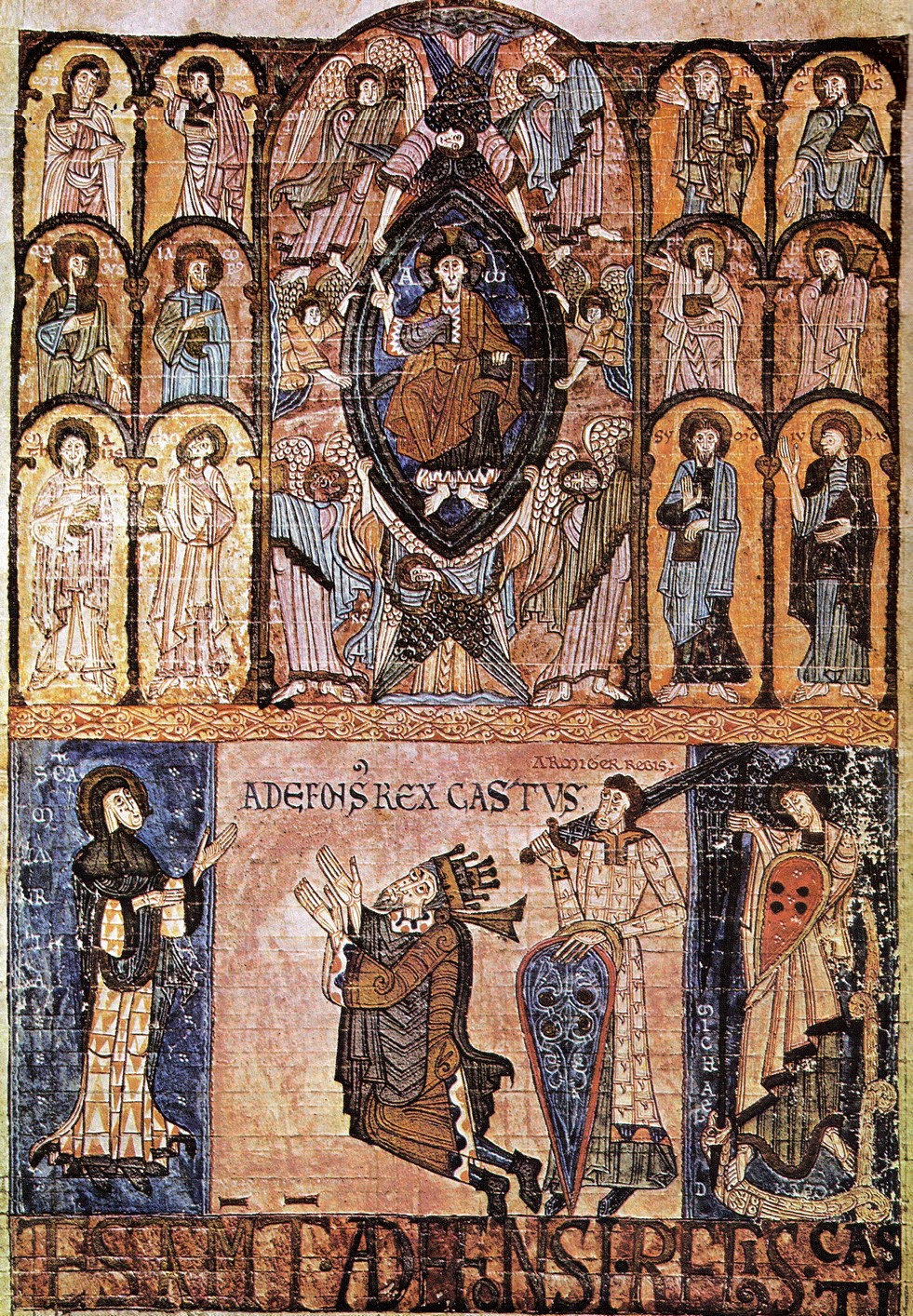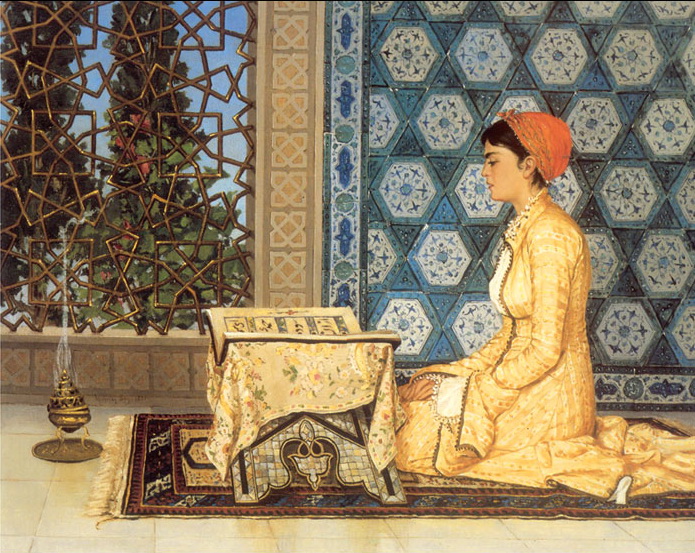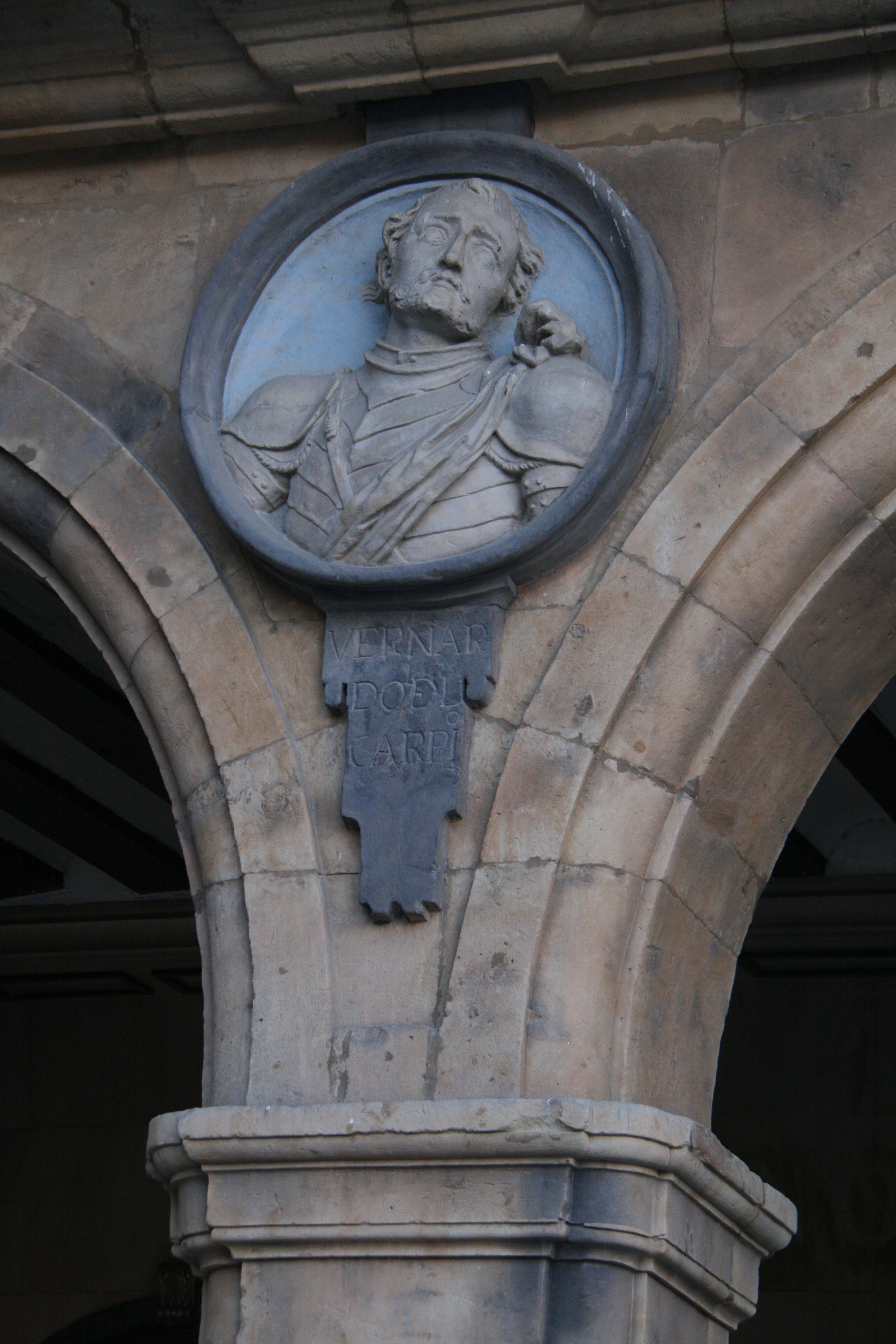|
Tribute Of 100 Virgins
The tribute of 100 virgins ( es, tributo de las cien doncellas) was a legendary annual tribute of one hundred virgin maidens paid by the Christian kingdom of Asturias to the Muslim emirate of Córdoba. Fifty were to be of noble birth and fifty commoners.M. Manzanares de Cirre, "Las cien doncellas: trayectoria de una leyenda", '' PMLA'', Vol. 81, No. 3 (Jun., 1966), pp. 179-184, https://www.jstor.org/stable/460802, retrieved August 15, 2015. The tribute has been called "historically apocryphal but ideologically accurate... It plays an intriguing role in the formation and affirmation of ''reconquista'' ideology in the later Middle Ages, and also remains a powerful site in Spanish national cultural memory to this day."Emily C. Francomano, "The Legend of the Tributo de las cien doncellas: Women as Warweavers and the Coin of Salvation", '' Revista Canadiense de Estudios Hispánicos'', Vol. 32, No. 1, Autumn 2007, pp. 9-25, https://www.jstor.org/stable/27764172, retrieved August 10, 2015 ... [...More Info...] [...Related Items...] OR: [Wikipedia] [Google] [Baidu] |
Tribute
A tribute (; from Latin ''tributum'', "contribution") is wealth, often in kind, that a party gives to another as a sign of submission, allegiance or respect. Various ancient states exacted tribute from the rulers of land which the state conquered or otherwise threatened to conquer. In case of alliances, lesser parties may pay tribute to more powerful parties as a sign of allegiance and often in order to finance projects that would benefit both parties. To be called "tribute" a recognition by the payer of political submission to the payee is normally required; the large sums, essentially protection money, paid by the later Roman and Byzantine Empires to barbarian peoples to prevent them attacking imperial territory, would not usually be termed "tribute" as the Empire accepted no inferior political position. Payments ''by'' a superior political entity to an inferior one, made for various purposes, are described by terms including " subsidy". The ancient Persian Achaemenid Empir ... [...More Info...] [...Related Items...] OR: [Wikipedia] [Google] [Baidu] |
Alfonso II Of Asturias
Alfonso II of Asturias (842), nicknamed the Chaste ( es, el Casto), was the king of Asturias during two different periods: first in the year 783 and later from 791 until his death in 842. Upon his death, Nepotian, a family member of undetermined relation, attempted to usurp the crown in place of the future Ramiro I. During his reign, which covered a span of 51 years, Alfonso discovered the supposed tomb of St. James the Great (called in Spanish) in the town of Compostela, which later became known as the city of Santiago de Compostela. He was the son of Fruela I and Munia, a Basque woman captured and brought back to Asturias by the former following a military campaign. Early life He was born in Oviedo in 759 or 760. He was put under the guardianship of his aunt Adosinda after his father's death, but one tradition relates his being put in the Monastery of San Xulián de Samos. He was the governor of the palace during the reign of Adosinda's husband Silo. On Silo's dea ... [...More Info...] [...Related Items...] OR: [Wikipedia] [Google] [Baidu] |
Spanish Legends
Spanish might refer to: * Items from or related to Spain: **Spaniards are a nation and ethnic group indigenous to Spain **Spanish language, spoken in Spain and many Latin American countries **Spanish cuisine Other places * Spanish, Ontario, Canada * Spanish River (other), the name of several rivers * Spanish Town, Jamaica Other uses * John J. Spanish (1922–2019), American politician * "Spanish" (song), a single by Craig David, 2003 See also * * * Español (other) * Spain (other) * España (other) * Espanola (other) * Hispania, the Roman and Greek name for the Iberian Peninsula * Hispanic, the people, nations, and cultures that have a historical link to Spain * Hispanic (other) * Hispanism * Spain (other) * National and regional identity in Spain * Culture of Spain * Spanish Fort (other) Spanish Fort or Old Spanish Fort may refer to: United States * Spanish Fort, Alabama, a city * Spanish Fort (Color ... [...More Info...] [...Related Items...] OR: [Wikipedia] [Google] [Baidu] |
Reconquista
The ' (Spanish, Portuguese and Galician for "reconquest") is a historiographical construction describing the 781-year period in the history of the Iberian Peninsula between the Umayyad conquest of Hispania in 711 and the fall of the Nasrid kingdom of Granada in 1492, in which the Christian kingdoms expanded through war and conquered al-Andalus; the territories of Iberia ruled by Muslims. The beginning of the ''Reconquista'' is traditionally marked with the Battle of Covadonga (718 or 722), the first known victory by Christian military forces in Hispania since the 711 military invasion which was undertaken by combined Arab- Berber forces. The rebels who were led by Pelagius defeated a Muslim army in the mountains of northern Hispania and established the independent Christian Kingdom of Asturias. In the late 10th century, the Umayyad vizier Almanzor waged military campaigns for 30 years to subjugate the northern Christian kingdoms. His armies ravaged the north, even s ... [...More Info...] [...Related Items...] OR: [Wikipedia] [Google] [Baidu] |
Kingdom Of Asturias
The Kingdom of Asturias ( la, Asturum Regnum; ast, Reinu d'Asturies) was a kingdom in the Iberian Peninsula founded by the Visigothic nobleman Pelagius. It was the first Christian political entity established after the Umayyad conquest of Visigothic Hispania in 718 or 722. That year, Pelagius defeated an Umayyad army at the Battle of Covadonga, in what is usually regarded as the beginning of the ''Reconquista''. The Asturian kings would occasionally make peace with the Muslims, particularly at times when they needed to pursue their other enemies, the Basques and rebels in Galicia. Thus Fruela I (757–68) killed 40,000 Muslims but also defeated the Basques and Galicians, and Silo (774–83) made peace with the Muslims but not with the Galicians. Under King Alfonso II (791–842), the kingdom was firmly established with Alfonso's recognition as king of Asturias by Charlemagne and the Pope. He conquered Galicia and the Basques. During his reign, the holy bones of St James ... [...More Info...] [...Related Items...] OR: [Wikipedia] [Google] [Baidu] |
Islam And Women
The experiences of Muslim women ( ''Muslimāt'', singular مسلمة ''Muslimah'') vary widely between and within different societies. At the same time, their adherence to Islam is a shared factor that affects their lives to a varying degree and gives them a common identity that may serve to bridge the wide cultural, social, and economic differences between them. Many women are mentioned in the Quran, but only one is named: Mary, who appears more times in the Quran than in the Bible. According to the Quran, divine grace surrounded Mary from birth, and, as a young woman, she received a message from God through the archangel Gabriel that God had chosen her, purified her and preferred her above all "the women of the worlds".Stowasser, Barbara Freyer, "Mary", in: ''Encyclopaedia of the Qurʾān'', General Editor: Jane Dammen McAuliffe, Georgetown University, Washington DC. Among the influences which have played an important role in defining the social, legal, spiritual, and cosmol ... [...More Info...] [...Related Items...] OR: [Wikipedia] [Google] [Baidu] |
Women In Islam
The experiences of Muslim women ( ''Muslimāt'', singular مسلمة ''Muslimah'') vary widely between and within different societies. At the same time, their adherence to Islam is a shared factor that affects their lives to a varying degree and gives them a common identity that may serve to bridge the wide cultural, social, and economic differences between them. Many women are mentioned in the Quran, but only one is named: Mary, who appears more times in the Quran than in the Bible. According to the Quran, divine grace surrounded Mary from birth, and, as a young woman, she received a message from God through the archangel Gabriel that God had chosen her, purified her and preferred her above all "the women of the worlds".Stowasser, Barbara Freyer, "Mary", in: ''Encyclopaedia of the Qurʾān'', General Editor: Jane Dammen McAuliffe, Georgetown University, Washington DC. Among the influences which have played an important role in defining the social, legal, spiritual, and cosm ... [...More Info...] [...Related Items...] OR: [Wikipedia] [Google] [Baidu] |
Arab Slave Trade
History of slavery in the Muslim world refers to various periods in which a slave trade has been carried out under the auspices of Arab peoples or Arab countries. Examples include: * Trans-Saharan slave trade * Indian Ocean slave trade * Barbary slave trade * Slavery in Tunisia * Slavery in Libya * Slavery in Sudan * Slavery in Mauritania * Slavery in Yemen See also * History of slavery in the Muslim world * Qiyān * Saqaliba *Slavery in the Ottoman Empire Slavery in the Ottoman Empire was a lawful institution and a significant part of the Ottoman Empire's economy and traditional society. The main sources of slaves were wars and politically organized enslavement expeditions in the Caucasus, Easte ... {{SIA Slave trade Slavery in Africa Slavery in Asia African slave trade ... [...More Info...] [...Related Items...] OR: [Wikipedia] [Google] [Baidu] |
Sexual Slavery
Sexual slavery and sexual exploitation is an attachment of any ownership rights, right over one or more people with the intent of Coercion, coercing or otherwise forcing them to engage in Human sexual activity, sexual activities. This includes forced labor, reducing a person to a servile status (including forced marriage) and Sex trafficking, sex trafficking persons, such as the Child prostitution, sexual trafficking of children. Sexual slavery may also involve single-owner sexual slavery; ritual slavery, sometimes associated with certain religious practices, such as ritual servitude in Ghana, Togo and Benin; slavery for primarily non-sexual purposes but where non-consensual sexual activity is common; or forced prostitution. The Vienna Declaration and Programme of Action calls for an international effort to make people aware of sexual slavery, and that sexual slavery is an abuse of human rights. The incidence of sexual slavery by country has been studied and tabulated by UNE ... [...More Info...] [...Related Items...] OR: [Wikipedia] [Google] [Baidu] |
Abd Al-Rahman II
Abd ar-Rahman II () (792–852) was the fourth ''Umayyad'' Emir of Córdoba in al-Andalus from 822 until his death. A vigorous and effective frontier warrior, he was also well known as a patron of the arts. Abd ar-Rahman was born in Toledo, the son of Emir al-Hakam I. In his youth he took part in the so-called "massacre of the ditch", when 72 nobles and hundreds of their attendants were massacred at a banquet by order of al-Hakam. He succeeded his father as Emir of Córdoba in 822 and for 20 years engaged in nearly continuous warfare against Alfonso II of Asturias, whose southward advance he halted. In 825, he had a new city, Murcia, built, and proceeded to settle it with Arab loyalists to ensure stability. In 835, he confronted rebellious citizens of Mérida by having a large internal fortress built. In 837, he suppressed a revolt of Christians and Jews in Toledo with similar measures. He issued a decree by which the Christians were forbidden to seek martyrdom, and he had a ... [...More Info...] [...Related Items...] OR: [Wikipedia] [Google] [Baidu] |
Bernardo Del Carpio
Bernardo del Carpio (also spelled Bernaldo del Carpio) is a legendary hero of the medieval Spain. Until the end of the nineteenth century and the labors of Ramón Menéndez Pidal, he, not El Cid, was considered to have been the chief hero of medieval Christian Spain and was believed to be a historical person. His factual existence has been debated, although the Spanish government has not acknowledged him so. The story The earliest form of the legend of Bernardo is found in the ''Chronicon mundi'' of Lucas of Tuy (1236), followed closely by the ''Historia Gothica'' of Rodrigo Jiménez de Rada (1243) and the ''Primera Crónica General'' (1270).Albert B. Franklin III, "A Study of the Origins of the Legend of Bernardo del Carpio", ''Hispanic Review'' 5/4 (1937): 286–303. . According to the form of the legend found in the 13th-century chronicles, Bernardo was the son of the secret marriage of Sancho Díaz, count of Saldaña, and Jimena, daughter of King Alfonso II of Asturias (), ... [...More Info...] [...Related Items...] OR: [Wikipedia] [Google] [Baidu] |







